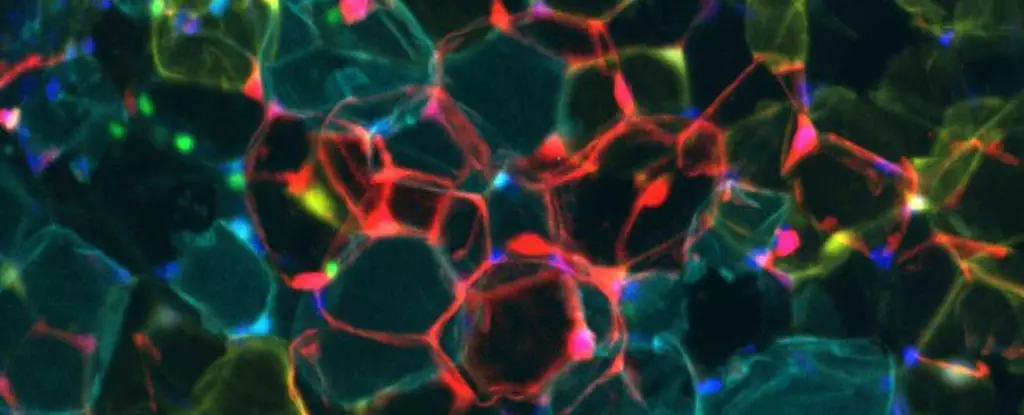Recent research conducted by physician scientist Brian Feldman and molecular biologist Liang Li from the University of California, San Francisco has shed light on a potential breakthrough in the field of fat cell biology. Through a series of experiments on human cell cultures and genetically engineered mice, the researchers were able to manipulate the functions of adipose tissue, turning ‘deep storage’ white adipose tissue (WAT) into a more metabolically active form known as brown adipose tissue (BAT).
In mammals, fat tissues typically exist in two distinct forms – white fat and brown fat. White fat functions as a long-term storage unit for excess calories, while brown fat is equipped with cellular power-generators that enable it to burn through fuel rapidly. While white fat is abundant in adult humans, brown fat is more common in babies and hibernating mammals, where it serves a critical role in temperature regulation.
Feldman’s research focused on the transcription factor Klf15, which plays a crucial role in regulating fat metabolism. By manipulating the expression of Klf15 in white adipose tissue, the researchers were able to induce a transformation of white fat into a ‘beige’ form that exhibited properties of brown fat. This switch from a lipid-locker to a calorie-burner could have significant implications for treating obesity and metabolic disorders.
The researchers also identified the adrenergic receptor Adrb1 as a critical link in the process of activating brown fat characteristics in white adipose tissue. While previous studies have focused on Adrb3 as a potential target for fat tissue transformation, Feldman’s findings suggest that Adrb1 may be a more suitable therapeutic target in humans. Clinical trials are currently underway to explore the efficacy of Adrb1 agonists in improving metabolic health.
The ability to convert white adipose tissue into a more metabolically active form could offer new possibilities for treating obesity and related metabolic disorders. By targeting specific molecular pathways involved in fat tissue transformation, researchers may be able to develop more effective and sustainable approaches to weight management.
The research conducted by Brian Feldman and Liang Li represents a significant step forward in our understanding of fat cell biology. By uncovering the mechanisms that regulate fat tissue identity, the researchers have opened up new opportunities for exploring novel therapeutic interventions for obesity and metabolic diseases. The future of fat cells may indeed be white turning into beige, offering hope for a healthier and leaner future for all.


Leave a Reply